#Euphranor
Text
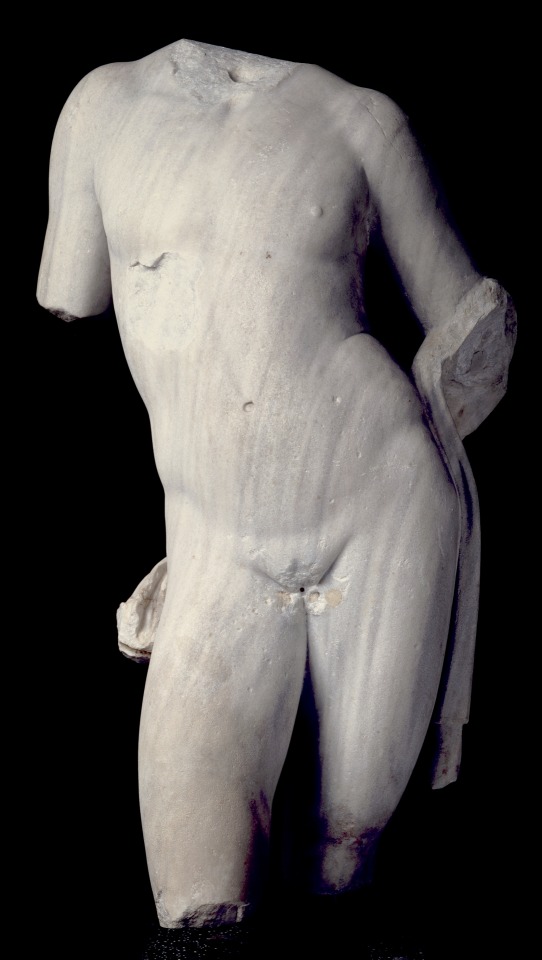
~150, (Auctor incertus), Torso de efebo, variante del Paris de Eufranor
#Auctor incertus#Corpus pueri#Torso de efebo#Variante del Paris de Eufranor#saec. II#150#sculptura#Museo Nacional del Prado#Matriti#Paris#Euphranor#RYQG2DT
10 notes
·
View notes
Text
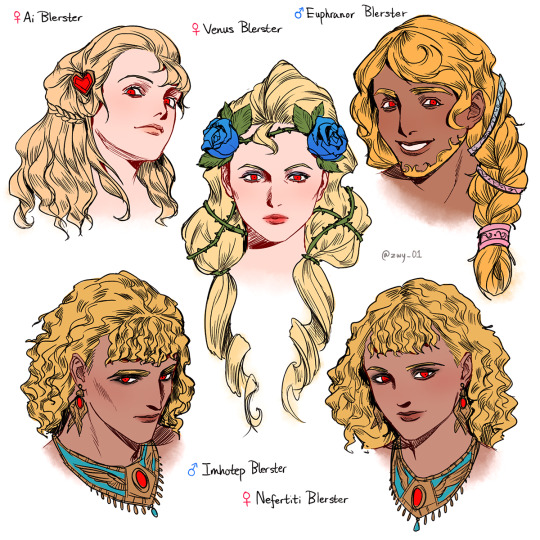
Noble OCs - Blerster
Making five OCs for every clan!
Ai Blerster: Non-pureblood. Alive in the present day, belongs to Raskreia’s generation.
Ai proudly calls herself a scientist. Well, she’s impressed with her advanced creations even though she isn’t an advocate for what they actually do. Thanks to Ai’s curiosity and ambition, she ends up developing a dangerous poison which can be broadly labeled as a “love potion” if all negative side effects are ignored. If someone gives this love poison to whom they desire and have unrequited love for, the recipient would return those feelings at the eventual cost of their own sanity. The gimmick is memory manipulation. It works by replacing the people in the target’s most cherished and impactful memories with the one who feeds them the poison. This process is so seamless that the victim doesn’t even notice that their memories have been tampered with. The effects of this potion aren’t permanent, though. It becomes unstable in about a century or so and if the antidote isn’t administered by that point, the “authentic” memories resurface and clash with the artificial ones and immense pain follows. Ai is amazed and horrified at the same time. It works, but it’s cursed. Damn, she only wanted to make a prank potion that has the other person burp out pink heart-shaped cloud puffs. Turns out she has the potential to be a real villain if she wants to. Ai hands this love poison to the nobles’ equivalent of forensic scientists for them to study memory manipulation in crime. It’ll be extremely helpful for evidence examination and analyzation. Thank goodness Ai is on their side and supports criminal justice or else they’ll be in quite some trouble. She does successfully develop her ideal prank potion though. That’s the most important part. Her partner thinks it’s amusing. Ai’s hobby is collecting lollipop wrappers, flattening and smoothing them, and putting them in a special photo album.
Venus Blerster: Pureblood. Entered forced eternal sleep, belonged to Gejutel’s generation.
Venus was a strange and unpredictable person. Throughout her lifetime, she oscillated between praising blissful life and lamenting how existence is inherently pain and torture. It was almost as if she had two completely different personalities, and no know knew what triggered her to switch from one to the other. She could be twirling around with her arms wide open as she’s passionately singing about how beautiful the world is, and one minute later she’s sobbing violently as she’s mercilessly destroying every single flower in her garden and apologizing to them for forcing them to grow in this miserable place. The frequency of Venus’ personality changes were just as unpredictable as the things she did. Sometimes she switched personalities once every five minutes, sometimes she remained in one for decades which made people wonder if she was finally “settling down” for good. Then they would be proven wrong when she switched again. Rinse and repeat. Her erratic nature did not hinder her charisma from manifesting. Venus had many friends who embraced her for who she was. One of them was the previous Previous Lord. Venus’ greatest challenge in life was understanding the true meaning of love. There were countless definitions that were distinct from each other yet vaguely overlapped at times and that bothered Venus immensely. The inconsistency and lack of a single uniform definition drove her mad. She was certain that there is one that underlies them all. And there was a reason behind why she desired an answer so badly. Venus was aware of her personality changes and despite living with and mostly being used to it, she was miserable from experiencing countless ups and downs. Ascending into the heavens then crashing down into hell in a perpetual cycle drove her mad. At first she tested love for friends. Not quite. Then she tried love for significant others. Didn’t cure her. Then she moved onto love for family. Turns out a child couldn’t fill the hole in her soul either. The Previous Lord was the product and victim of Venus’ experiments. She tried her best to be a good mother, but her son ended up being more like a parental figure to her than she ever was to him. Venus continued to be a mess as her son took care of her without complaint. One faithful day, she seemingly found the answer to her struggles. Self love. To her, the only way to achieve that was to leave this world for an eternal paradise. She can finally be free from pain. She felt sorry for her son, but she loved him very much, so she couldn’t leave him alone. They could be together forever, she thought. Venus prepared a juice mix and offered some to her son. Unbeknownst to him, it was laced with a lethal poison. Venus had intended to take him out with her. She cradled her little boy in her arms as both of them closed their eyes. It was nothing less than a miracle that the nobles were able to find the Lord’s heir in time and save him from being at death’s door. But it was too late for his beloved mother. Before Venus died, her hobby was cultivating blue roses.
Imhotep Blerster: Non-pureblood. Alive in the present day, belongs to Raskreia’s generation.
Imhotep is Nefertiti’s older twin. He’s one of the calmest people out there and his deep voice is very soothing. Those who feel agitated and desire sleep for the sake of tranquility can hire him to show up at their homes and read books to them. Imhotep used to be part of the Central Order as one of the Knights who reads daily reports out loud but he got fired because his colleagues kept drifting off whenever he spoke. They were very nice about kicking him out, though. It’s not his fault, he just has some irresistible type of superpower. Currently, Imhotep works as a therapist for friends and couples. While he is aware that love can’t fix everything, he remains hopeful that it can improve lives if people communicated better. He does his best to help his clients heal with each other if there’s still love left in rocky friendships and strained romantic relationships. If nobles are going to live for so long, might as well try to not hate each other forever in case something goes wrong. Imhotep can make even the most aggressive people feel at ease in his presence. The actual therapy part is arguably easier than trying to get people to come into his office in the first place. Some are too proud to admit that they need help, some are scared of facing their problems despite wanting change, others simply don’t want a third party involved in their business. Imhotep just patiently waits for them to make up their minds. In the meantime, his hobby is keeping supernatural bees and collecting their delicious honey. The honey comes in all sorts of colors and flavors depending on the flowers he offers to them. The bees are very smart and can communicate with Imhotep. They understand his words and love following him around and hanging out in his hair. People sometimes mistake them for hair accessories until they start moving. Imhotep makes sweet hot beverages with the honey he collects.
Nefertiti Blerster: Non-pureblood. Alive in the present day, belongs to Raskreia’s generation.
Nefertiti is Imhotep’s younger twin. Like her brother, she is friendly and wants to help people. Currently, she works as a therapist for families. Her office is right next to Imhotep’s as they opened their therapy center together as siblings. Nefertiti used to be a member of the Central Order too except she didn’t leave because she got fired. She quit being a Knight to support her brother as soon as she learned about him getting kicked out. If he can’t be there, then she won’t be there either. The twins decided to work together because they share a common interest in improving society through using love to rekindle broken bonds. In Nefertiti’s case, she focuses on the love found between parents and children and between siblings. It would sadden her to see family members attempt to strangle each other when there are less extreme options available. Sometimes it’s inevitable as certain people are hopeless, but might as well give it an honest shot before resorting to violence. If they’re going to fight, they can do it outside. Unlike Imhotep, Nefertiti won’t tolerate chaos inside her office. She doesn’t have her brother’s magical soothing voice so she can’t get overreacting clients to calm down easily. Instead, she makes them all wear “peace bracelets” when they come in, which are special artifacts that temporarily prevent extreme fluctuations in mood. If you accidentally destroy her vase, she might as well blast a hole in your forehead with an arrow. Just kidding, Nefertiti won’t actually do that. She’s going to think about it, though. Be careful, she’s the less patient twin even though both of them are usually very nice.
Euphranor Blerster: Pureblood. Alive in the present day, belongs to the Previous Lord’s generation.
Euphranor is vibrant and energetic. He used to live in Lukedonia with his partner until the latter suggested that maybe it’s better if they get a new life elsewhere in the world. Although the change of mind was so sudden it seemed out of place, Euphranor nonetheless supported his partner’s idea and both of them moved to the human world. It’d be nice to switch up the pace of things, he thought. Besides, he had always wanted to do something more fun and exciting even if he isn’t the type to voice such desires. He’s glad that someone else brought it up first. Within a week, the two of them said goodbye to Lukedonia and started traveling around the world. Currently, they live somewhere in the United States and Euphranor is having the time of his life as a wedding photographer. Weddings do bring out the weirdest people after all. It’s lively, the music is great, the drama is fun to watch, dancing is cool, and the cake tastes pretty nice too. He can even bring home some yummy leftovers. Euphranor thinks humans are cute and appreciates their enthusiasm for life. In a way, he finds the relatively short human lifespan to be very romantic because they celebrate even the smallest of milestones that most nobles usually ignore. Wedding anniversaries, birthdays, passing exams, getting a driver’s license, baby taking first steps, stuff that maybe aren’t worth remembering… the nobles can learn from it, eh? Perhaps it’ll make them less stoic if they practiced gratitude a bit more. If Euphranor ever visits home, he’s definitely going to bring that up to everyone except his partner isn’t exactly too keen on the idea for unknown reasons yet again. Maybe one day. Euphranor enjoys watching overly dramatic reality dating shows even though he knows they’re pretty much staged for views. He’s gonna need more popcorn!
Thank you for reading! Kertia is next!
#noblesse#manhwa#myart#oc#original character#ai blerster#venus blerster#imhotep blerster#nefertiti blerster#euphranor blerster
13 notes
·
View notes
Text
Athena when Odysseus doesn’t listen to her and something goes wrong:

(Mattei Athena at Louvre. Roman copy from the 1st century BC/AD after a Greek original of the 4th century BC attributed to Cephisodotos or Euphranor.)
#greek mythology#tagamemnon#epic the musical#athena#statue of Athena#I’m so sorry#this is so dumb#😭😭😭#greek mythology memes#she looks like she’s judging you for doing something stupid 💀#alternatively:#Athena @ Odysseus after Poseidon sinks 12 of Odys ships as revenge for them blinding Polyphemus
136 notes
·
View notes
Text
EUPHRANOR, MEANING TO DELIGHT. OHHHHH MY HEART WHAT A LOVELY NAME FOR A BABY BOY!!!!!!
2 notes
·
View notes
Photo
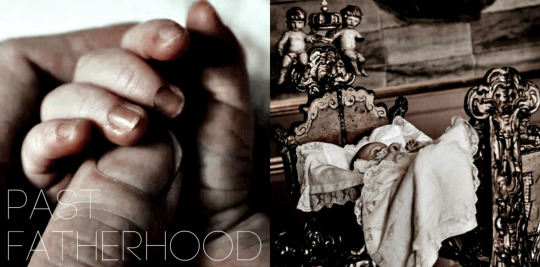
Children listed from Aren’s lives and in order of birth. 5 trueborn children, 2 adopted, and 5 illegitimate children born of his wife and claimed as his own. Only two souls of his many children survive: @konstcntin & @nikolaigray
Aren’s Children
Aren lived to a very old age and was able to see his children grow up until one was killed in the destruction of Eden and the other outlived him.
Euphranor: son of Erish, born Druid
Eldest son of Aren and Erish, born a druid. Lost his mother in late childhood and was raised by his father and the people of the village that he served. Followed in his father’s footsteps by helping humanity and druid alike, traveling around the world in his first life. Outlived his father. Reincarnated many times and now his soul rests in the Isle of the Blessed.
Elpidius: son of Erish, made Druid
Youngest son of Aren and Erish, born human and made druid by his Archdruid father after the death of his mother. Lost his mother in late childhood and was raised by his father and the people of the village that he served. Was eventually killed in the destruction of Eden in his first life. Reincarnated many times, including at one point as the druid Merlin which became his last life. His soul now rests in the Isle of the Blessed.
Meniates’ Child
Meniates was able to raise his adopted daughter from age 5 up to age 21 before her death.
Ilanna: daughter of unknown, Witch (Adopted)
Young witch, orphaned, living off the streets and found trying to steal from a nobleman in Egypt. Taken in by Meniates and raised as his own daughter. At 21 years old she got killed by a man that she had denied.
Perseus’ Children
Perseus was able to raise his children and loved each one equally up until his untimely death at 41 years old.
Electryon: son of Andromeda, Human
Eldest son of Perseus and heir to the Mycenean throne, ruling as king after his father’s death until his own death. Married, had many children and was eventually killed. Became a cubi demon.
Gorgophone: daughter of Andromeda
TBD. :)
Perses: son of Andromeda, Human (Illegitimate, Claimed)
Biological son of a sailor and friend of Andromeda. In an agreement of alliance and diplomacy with Cossaei, Prince Perses was sent to live with the family of his future wife, the daughter of Cossaeian leaders, at 17 years old. He eventually helped bring about the Persian people.
Sthenelus: son of Andromeda, Human (Illegitimate, Claimed)
Biological son of a Mycenaean royal guard. Triplet. Became King of Mycenae after Electryon’s death and built a new palace in Tiryns. Was eventually killed by Hyllus, son of Heracles and Deianira.
Alcaeus: son of Andromeda, Human (Illegitimate, Claimed)
Biological son of a Mycenaean royal guard. Triplet. Handled many political and financial affairs in Mycenaea. Married his wife and had three children, a son and two daughters before he was killed by political adversaries.
Cynurus: son of Andromeda, Human (Illegitimate, Claimed)
Biological son of a Mycenaean royal guard. Triplet. Died unexpectedly in his early infancy due to unknown congenital issues. Never made it past 7 months old.
Heleus: son of Andromeda, born Druid
The only son of Perseus to be born a druid. The product of Perseus and Andromeda attempting to salvage their relationship and grieving their lost child together. Lived an honest, humble life before he was cursed to become a tree in his last life. Eventually broke the curse.
Autochthe: daughter of Andromeda, made Druid (Illegitimate, Claimed)
Biological daughter of a childhood friend of Andromeda, and her true love. Died in childhood due to a slow illness. However, was turned into a druid before she died by her Archdruid father. Has stopped reincarnating and her soul rests in the Isle of the Blessed.
Mestor: son of unknown, made Druid (Adopted)
Orphaned noble child from a war and taken in by the royal family. Was turned into a druid by his adopted father at request. Had an illegitimate daughter. Lived a simple life as an artist and eventually married a man he loved, another druid. Has since stopped reincarnating and so his soul rests in the Isle of the Blessed.
#// the reason was i felt like it. every day i realize more and more how family is the most important thing in his lives so i felt like it#// also maybe this helps his two sons in game figure out their siblings <3#// who are long gone and dead sorry babes#study ♔ (boy; you're gonna carry that weight)
4 notes
·
View notes
Text
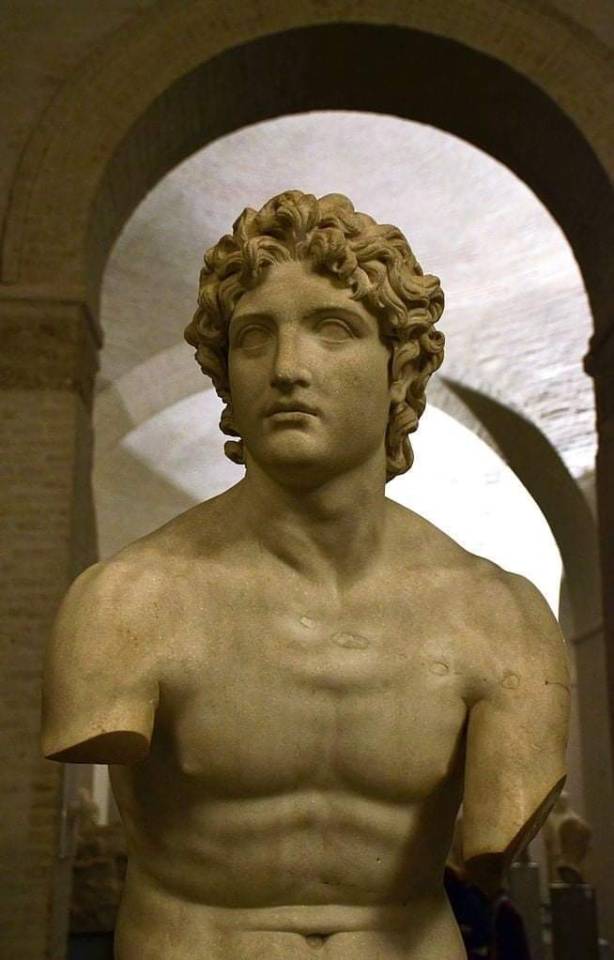
Euphranor of Corinth (middle of the 4th century BC)
1 note
·
View note
Text
Excerpt from Song of Myself
by Walt Whitman
The past and present wilt — I have fill'd them, emptied them,
And proceed to fill my next fold of the future.
Listener up there! what have you to confide to me?
Look in my face while I snuff the sidle of evening,
(Talk honestly, no one else hears you, and I stay only a
minute longer.)
Do I contradict myself?
Very well then I contradict myself,
(I am large, I contain multitudes.)
I concentrate toward them that are nigh, I wait on the door-slab.
Who has done his day's work? who will soonest be through
with his supper?
Who wishes to walk with me?
Will you speak before I am gone? will you prove already too
late?
Euphranor 340 BC Antikythera Ephebe
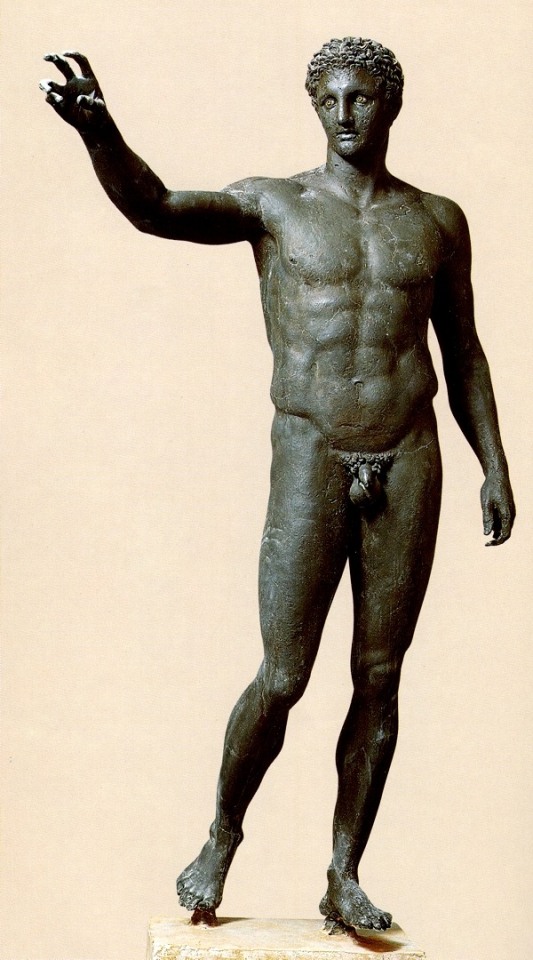
#Song of Myself#Walt Whitman#Whitman#Euphranor#Antikythera Ephebe#Will you speak before I am gone#Art#Poetry#Fine Arts#Poems#Sculpture#Statue#Bronze
11 notes
·
View notes
Text

testing some new techniques and stuff :0
#euphranor#tms#the maze state#big cat#feline#tiger#leopard#art#aesthetic#concept art#concept#illustration#fullbody#my oc#Original design#original art#original character#oc#my art
2 notes
·
View notes
Text

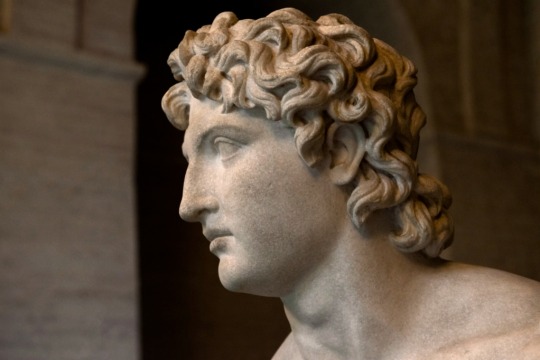

Alexander Rondanini
Alexander the Great according to Euphranor of Corinth. Part of a triumphal statue of King Philip.
King Philip of Macedon on his chariot lead by 4 horses; his son Alexander, taking on the chariot, holds the reins in both hands (armor and garb added the copyist). Creation of the group after the Battle of Chaeronea, 338 BC.
(Glyptothek, Munich.)
95 notes
·
View notes
Link
Vieno is a Vine Fae, part of the Wild Fae race.
0 notes
Photo

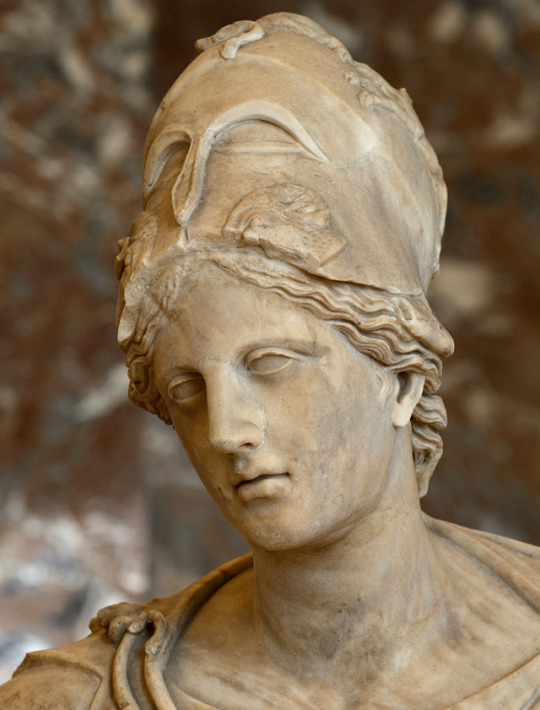
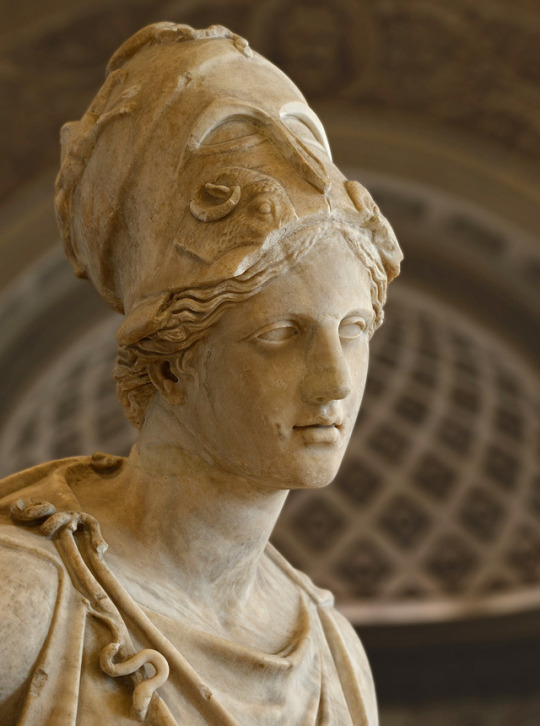
~ Athena (so-called “Athena Mattei”).
Culture/Date: Roman (?) copy ca. 100 B.C. after a Greek bronze model of the 4th century B.C.
Artist: Euphranor.
Medium: Parian marble
Provenance: Paris, Louvre Museum
2K notes
·
View notes
Photo

Les splendeurs du musée archéologique du Pirée : Athena du Piree de Kaphisodolos ou Euphranor 4eme siecle BC, Bronze statuette of Artemis de Euphranor #archeologicalmuseumofpiraeus #athena #gorgone #euphranor #4thcenturybc #artemis #peplos #himaton #libationbowl #bow #praxíteles #sculpture #bronze #monumentsandmuseumsofgreece #instapic #photooftheday #piraeusmycity (à Archaeological Museum of Piraeus) https://www.instagram.com/p/CCd_YNplfVK/?igshid=1vpfsze5et3ds
#archeologicalmuseumofpiraeus#athena#gorgone#euphranor#4thcenturybc#artemis#peplos#himaton#libationbowl#bow#praxíteles#sculpture#bronze#monumentsandmuseumsofgreece#instapic#photooftheday#piraeusmycity
0 notes
Text

Bronze Sculpture, thought to be either Paris or Perseus (Paris is more probable), circa 340-330 BC, National Archaeological Museum, Athens. Comes from the Antikythera shipwreck. Attributed to Euphranor. Source: Wikimedia
28 notes
·
View notes
Text
“What is also consistent is that both siblings are eternal teenagers—both Artemis and Apollo remain perpetual adolescents, forever on the cusp of adulthood without ever quite crossing that border. For Apollo, this is ultimately more academic than meaningful: His youth is manifest primarily in his lack of a beard in the arts. He also never marries (as does Zeus with Hera, Poseidon with Amphitritê, Hades with Persephonê, and even Dionysos with Ariadne). However, he does have sex with both males and females, and he has children, and thus he might be compared to Hermes, Ares in those myths where Aphrodite is the wife of Hephaistos, and even Demeter, who bears Persephonê having “mingled in love” with Zeus, but who is not considered his wife or consort. Being a youth, then, does not have a marked influence on Apollo’s persona—he is a sexually initiated absentee father.
By contrast, Artemis’ eternal youth is meaningful. Unlike all other goddesses, she is portrayed as a child in the arts of ancient Greece. This comes across especially well in the Theomakhy scene of Homer’s Iliad, when Artemis squared off against the more mature goddess Hera (Book 21: 489–496, 505–513): . . . Artemis appears even younger in her third-century bce description in Kallimakhos’ Hymn to Artemis when she asks the Cyclopes to make her weapons (ll. 72–78): . . . Her childishness is not relegated exclusively to literary accounts: Unlike the other Greek goddesses, Artemis might also appear in the visual arts as a child. This is certainly rare. One of the earliest known such portrayal is on an early fourthcentury red-figure amphora of Athenian or Apulian manufacture. Here the goddess Leto appears holding her two infant children in her two arms while running from a giant snake, clearly Pytho. A similar late fifth–early fourth century inscribed stele now in the Michael C. Carlos Museum at Emory University (Figure 2.1) shows the mother Leto running from Pytho while holding one toddler-aged child in her arms, another (presumably Apollo Python-slayer) running just behind her. In the three-dimensional arts, Pliny in his Natural History (34.19) documents a bronze statue by the fourth-century bce painter and sculptor Euphranor which depicts Leto carrying Artemis and Apollo as infants in her arms. In the passage cited above from Strabo (14.1.20) about the birth of Artemis and Apollo on Ortygia, the geographer continued his narrative with the description of a sculpture by the late fourth-century artist Skopas, who made a statue depicting Leto and the personification of Ortygia itself as a nurse holding in her arms the twins Artemis and Apollo as small children.”
- Stephanie Lynn Budin, Artemis (Gods and Heroes of the Ancient World)
1 note
·
View note
Photo
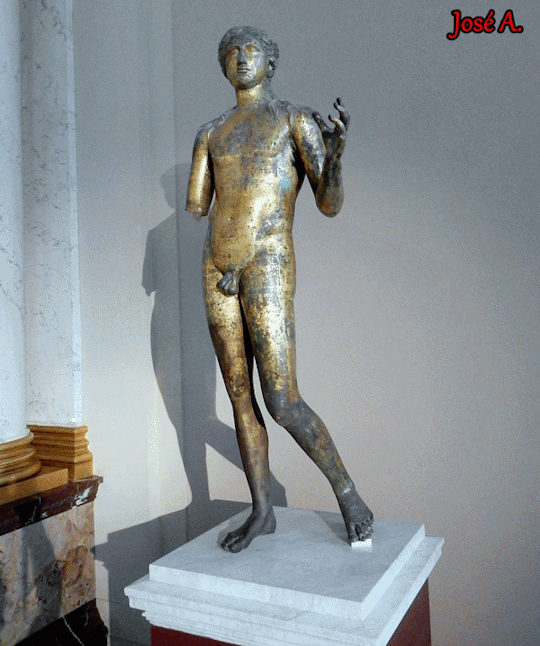
Apolo, siglo II d.C.
Procedencia: cerca del teatro galo-romano, Lillebonne (Seine-Maritime), Francia
Producción galo-romana
Bronce dorado. Las áreas superpuestas con hoja de oro aplicada con la ayuda de mercurio forman una cuadrícula que todavía es visible en lugares, particularmente en los muslos
H. 1,94 m
Adquirido en 1853
Descubierta en 1823, cerca del antiguo teatro de Lillebonne, esta es la estatua de bronce más grande de una deidad que ha sobrevivido de la antigua Galia. Apolo, considerado un dios benéfico, tenía una lejía en su mano izquierda - una configuración que era particularmente favorecida en el norte y centro-este de la Galia. Las proporciones y el equilibrio de la figura, y la forma en que se arregla el cabello, atestiguan la fuerte influencia de las formas griegas del siglo IV a. C. en los artistas galo-romanos.
Las tribulaciones y restauraciones del Lillebonne Apollo
Esta estatua de bronce dorado fue descubierta el 24 de julio de 1823, en las inmediaciones del antiguo teatro de Lillebonne (cerca de Rouen, en la región Sena-Maritime). Fue vendido en Inglaterra y permaneció en Londres durante casi treinta años en manos del coleccionista Samuel Woodburn, quien esperaba venderlo al Museo Británico. En 1853, fue comprado por el Estado francés y se unió a las colecciones del Louvre. La estatua, que representa al dios Apolo, fue fundida en varias secciones utilizando el método de cera perdida. Fue restaurado en muchas ocasiones, tal vez a partir del período clásico. La presencia de numerosas marcas de unión en la superficie del bronce explicaría la presencia del dorado, que se hizo con hoja de oro. Es difícil estar seguro de la fecha del dorado; la estatua pudo haber sido dorada en el momento en que fue fundida, luego por segunda vez al final del período imperial romano.
El culto de Apolo en la Galia
El Lillebonne Apollo es una de las estatuas de bronce más grandes que han sobrevivido de la antigua Galia. El dios de aspecto juvenil está completamente desnudo y originalmente habrá tenido una lejía (ahora perdida) en su mano izquierda, una configuración que fue particularmente muy valorada en el norte y centro-este de la Galia, donde se han encontrado estatuillas votivas similares en grandes cantidades. Apolo era considerado un dios benéfico, sanador y se asoció con varias otras deidades locales, a menudo mal definidas - Amarcolitanus, sin duda, así como Belenus, Borvo, Cobledulitavus, Grannus, Moritasgus, Vindonnus, y Virotutis. Muchos santuarios galo-romanos llevan marcas del culto de Apolo, estén o no situados cerca de manantiales con propiedades curativas.
Una obra galo-romana inspirada en un modelo griego
Las proporciones y el equilibrio de la estatua de Lillebonne, junto con la forma en que se arregla el cabello, demuestran la influencia de los modelos griegos en los artistas de la Galia romana. Realizada en el siglo II d.C. en la región de Lugdunum (actualLyons), la escultura se inspira gran parte de su inspiración en la tradición clásica. Imita el "contrapposto" desarrollado por Polyclitus a mediados del siglo V a. C. y se hace eco de las siluetas (igualmente cercanas a la adolescencia) de las figuras masculinas creadas en el siglo IV por escultores como Praxiteles, Euphranor y Scopas; también adopta el canon de formas extremadamente alargadas que se ven en las obras de Lysippus, en las que las proporciones de la cabeza se reducen deliberadamente. La postura y las características del dios también se toman prestadas del repertorio artístico de la antigua Grecia.
Bibliografía
B. Tailliez, "Trente ans d'histoire de l'Apollon de Lillebonne", Revue du Louvre et des musées de France, 1982, 2, p. 81-88, fig. 1, 3-6.
N. Duval, "L'Apollon de Lillebonne de l'abbé Cochet á nos jours, tribulations et restaurations", Centenaire de l'abbé Cochet, 1975, Actes du colloque international d'archéologie, Rouen, 1978, p. 265-286.
P. Zanker, Klassizistische Statuen, Maguncia, 1974, págs. 103-104, n 6.
E. Espérandieu, H. Rolland, Bronzes antiques de la Seine-Maritime, XIIIe supplément á Gallia, 1959, p. 24-25, n 10, pl. 3-5.
Información del Musée du Louvre.
13 notes
·
View notes
Text
The word perceive is, in our common usage, shot through and through with the notion of cognitive apprehension. So is the word apprehension, even with the adjective cognitive omitted. I will use the word prehension for uncognitive apprehension: by this I mean apprehension which may or may not be cognitive. Now take Euphranor's last remark:
'Is it not plain, therefore, that neither the castle, the planet, nor the cloud, which you see here, are those real ones which you suppose exist at a distance?' Accordingly, there is a prehension, here in this place, of things which have a reference to other places.
…
… This unity of a prehension defines itself as a here and a now and the things so gathered into the grasped unity have essential reference to other places and other times. … The things which are grasped into a realised unity, here and now, are not the castle, the cloud, and the planet simply in themselves; but they are the castle, the cloud, and the planet from the standpoint, in space and time, of the prehensive unification. In other words, it is the perspective of the castle over there from the standpoint of the unification here. It is, therefore, aspects of the castle, the cloud, and the planet which are grasped into unity here.
Alfred North Whitehead, Science and the Modern World
18 notes
·
View notes